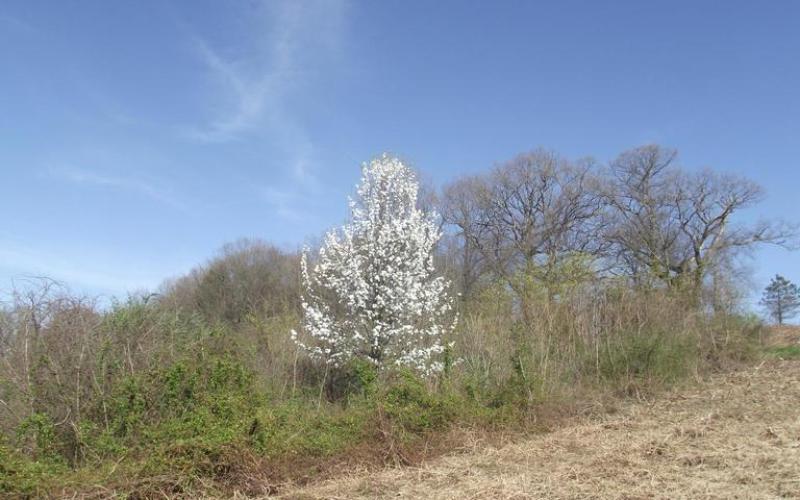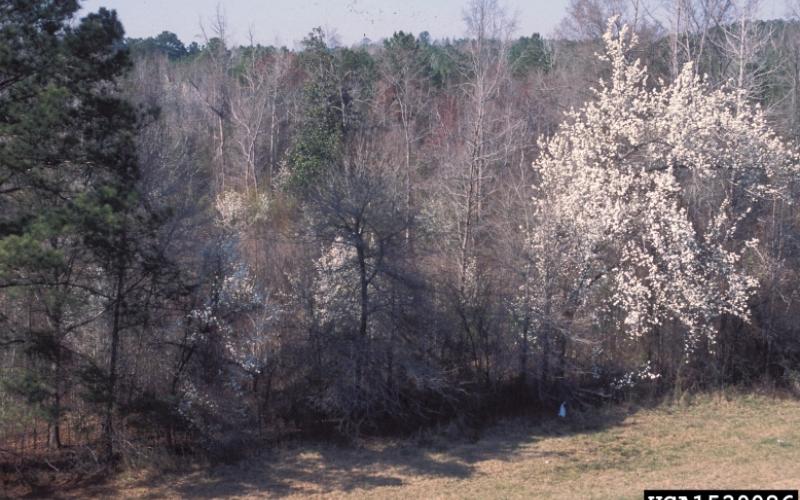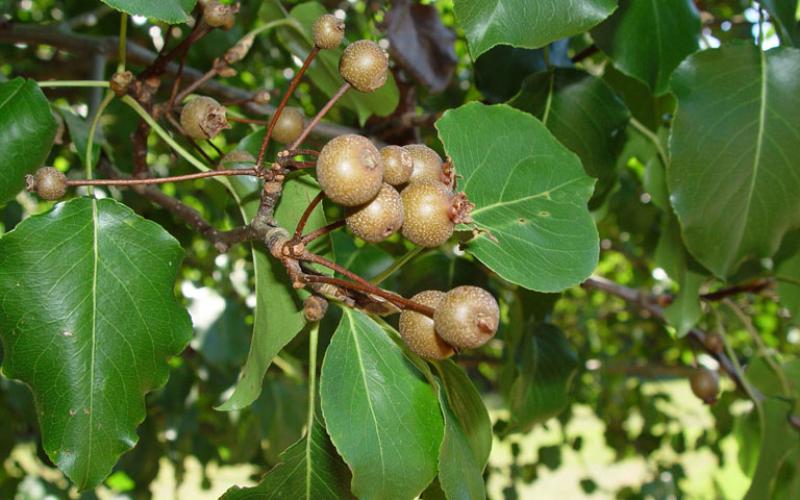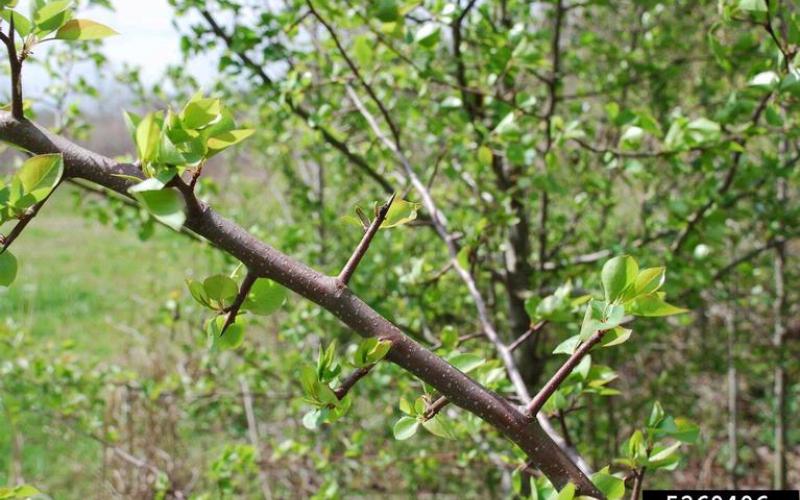Common names: Callery pear
Scientific name: Pyrus calleryana Decne.
Legal status
Three-year production phase-out period, after which sale of this species will be prohibited and the species will be designated as Restricted in 2026.
Background
Callery pear is a common ornamental and landscape species. It is native to Asia, occurring in southern China, Japan, Korea, and Taiwan. It was originally introduced in Maryland in the early 1900s to act as a source of rootstock for domestic pear trees, to help issues with fire blight.
Description
- A small deciduous tree, it can grow up to 60 feet in height and 2 feet in diameter, though that size is rare. Callery pear trees grow quickly, and typically don’t have time to develop strong structure. They are often susceptible to ice and storm damage and split easily.
- Alternate branching arrangement with simple leaves. Leaves are 2-3 inches in length, rounded to teardrop-shaped and margins are distinctly wavy with fine teeth. Branches and stems can have very thorny spur shoots. Foliage is often brilliantly colored in autumn, though foliage turns color late so trees are sometimes hit with frost before displaying fall foliage.
- Bark is greyish to brown. It is smooth on younger stems and branches, growing deeply fissured or scaly as it ages.
- Trees in bloom are conspicuous, as they bloom early, before leaf-out. The dense clusters of blossoms produce a strong rancid odor. Flowers are white with five petals.
- Fruits are tiny, ½ inch in diameter, hard pears. Fruits are green to brown in color with pale dots, almost woody, and become soft only after the first frost.
Habitat
Callery pear is found in a variety of habitats. They are commonly found along roadsides and in old fields, hedge rows or forest edges, but have also been found in wetlands and forests. These trees prefer full sun but also can be found in partially shaded habitat. Because of their tolerance in a variety of soil types, soil acidity, pollution, and drainage levels, they can be a popular urban tree.
Means of spread and distribution
Originally, callery pear cultivars had been bred to produce sterile fruit. On the landscape, cross-pollination between species occurred, which led to fertile fruit development. The wild individuals then can interbreed and produce even more viable seed. The most well-known cultivar is the Bradford pear. Callery pear produce a large amount of fruit, which is readily eaten by birds once the pears soften after the first frost. Seeds are then dispersed widely by the birds’ droppings. Callery pear can also spread vegetatively, sending up new shoots from shallow root systems.
Callery pear has been reported in 38 states. It is mainly distributed throughout the eastern, southern, and midwestern United States.
Impact
Callery pear is a rapid-growing tree that poses a major threat to native grasslands and their wildlife. It can quickly fill in gaps in open spaces, which leads to native plants being crowded out as they cannot compete for resources. Birds are attracted to the fruits once they are soft enough to eat, and often they can be hosts for other problematic species like European starlings.
Prevention and management
- Regular maintenance programs are recommended, as these are very tenacious invaders and will reinvade areas it has been removed if a seed source remains nearby.
- Small callery pear trees may be pulled by hand, being careful to get all the roots. Even small portions of root fragments often resprout.
- Cutting and mowing are effective at knocking back growth and providing access to overgrown sites, and for these methods to be effective, herbicide applications must be followed as either a cut-stump treatment or a foliar treatment to resprouting plants.
- For specific herbicide recommendations, contact your University of Minnesota Regional Extension Educator.






